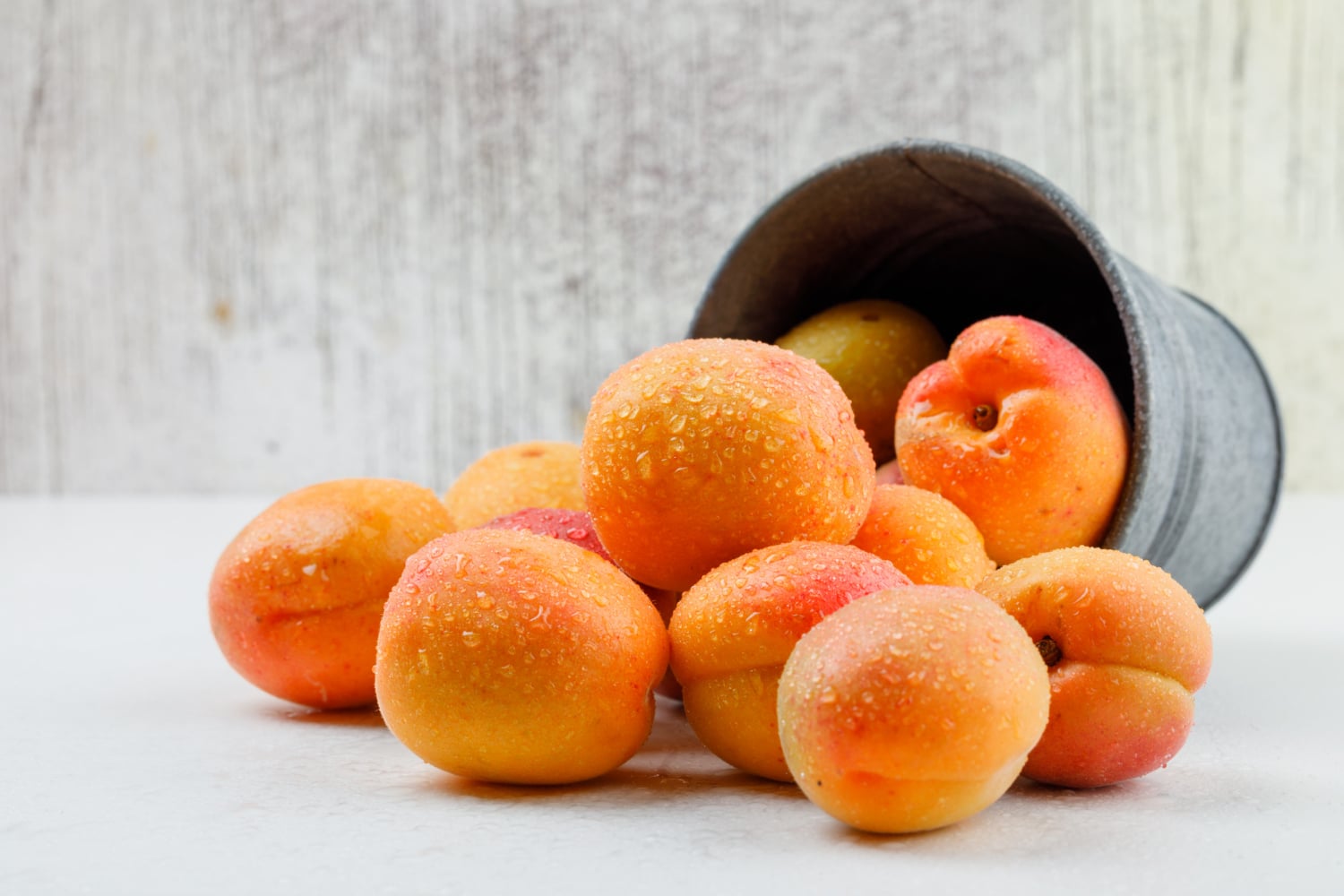Apricots are round and yellow fruit with a similar appearance to peach but have the same tartness of purple plums. This stone fruit is also known as Armenian plums. It possesses several health benefits, such as improved eye health and digestion. Consuming two fresh apricots only contains 34 calories, 8 grams of protein, and 0.27 grams of fat—making it ideal for a low-calorie diet.
Aside from that, apricots have a decent source of zeaxanthin, lutein, and beta-carotene, which are antioxidants that fight against radicals inside your body. Despite not being a citrus fruit, apricots also have a decent amount of citric acid responsible for giving the fruit its tart, plum-like flavor.
Fresh apricots have a pH level of 4.05, which is still considered acidic on the pH level scale. If you have hyperacidity, consuming sour fruits like apricots must be placed in moderation. Intaking too many apricots while not consuming neutralizers like eggs and vegetables will make your stomach upset.
Hydrochloric acid found in the stomach already has a pH level of 1 and is considered the highest of all variants. However, eating acidic foods further will diminish your stomach’s natural enzyme responsible for easier digestion. Apricots are tart enough to provide discomfort to your stomach but not enough to call medical intervention.
How Acidic Are Dried Apricots?
Dried apricots are a staple for areas that have limited access to the fruit. Drying seasonal fruits like apricots ensures that the food will be preserved further, making it available and easier to transfer in countries. Apricots contain a ton of health benefits and are starting to gain popularity during the past few years. Once dried, apricot still retains its original composition, with tighter fiber bonds that aid digestion.
Three whole dried apricots contain 20 percent of your daily fiber requirement. It also has insoluble fiber that acts like broomsticks that cleanse your digestive tract, reducing the risk of bowel cancer. Dried apricots also retain essential soluble fibers that absorb lousy cholesterol, preventing your body from gaining excess weight due to cholesterol and excess sugars.
Consuming dried apricots have a lower pH level of 4.9 to 5.1, which is slightly lower than fresh apricots. Dried apricots are commonly mixed with sugar, salt, and other preservatives, which aids the dehydration process. Sugar is a primary compound that reduces the pH level of food while retaining its natural acidity. Mixing sugar with fruit juices is essential to produce the raw tart flavor we love on these certain fruits.
Are Apricots Alkaline?
Using the pH level, apricots and other sour-tasting fruits will go on the level of acidic fruits. To be considered alkaline or basic, it should have a pH level of 8-14. Mixing baking soda with apricot will reduce its acid levels, but not enough to make it alkaline. Alkaline foods are known for their bitter, soap-like flavor. These are used on commercial products like toothpaste, house cleaners, bleach, and hair straighteners.
Most low-acid foods only have a pH level of 4.6 up to 6.9 and are mixed in minimal quantities. Acidic foods contain enough acid that is necessary to inhibit botulinum bacteria. This bacterium thrives on food that has low acid content and can cause problems to the digestive tract. Manufacturers mix specific amounts of acid on canned and bottled products to prevent bacteria buildup on the food.
Acidic foods like pickles, jams, jellies, marmalades, fruit butter, fruit preserves, and sauerkraut can be preserved easily due to their acid pH levels. Low-acid foods include meats, seafood, milk, and green vegetables, but they are not low enough to be considered alkaline. It should have a pH level lower than water (neutral pH water) to have an alkaline level.
Is Apricot Juice Acidic?
Apricot juice is derived from juicing apricot slices (without the seeds). Due to its thicker consistency than other juice, apricot juice is also called a form of nectar—since it tends to be juicier and thicker than most fruit juices. Nectar is described as a form of sweet liquid that constitutes syrup. Apricot juice can be used on different cooking and baking needs and can be consumed on its own.
Although apricot juices are mixed with sugar and other preservatives, they still possess high pH levels falling under the acidic lane. Despite it, apricot juice can be consumed in more significant amounts compared to its fresh counterpart. However, essential insoluble fibers are removed during the juicing process.
Insoluble fibers are essential in keeping the digestive tract clean. It brushes away excess cholesterol and fat buildup to your digestive system. This prevents the linings of your stomach from getting blocked, which can cause stomach discomfort, ulcer, and even cancer if left untreated.
Yes, apricot juice is still an acidic food. Still, it is less likely to trigger acid reflux compared to its fresh and dried variants. Dried fruits and other prepackaged fruits tend to be more acidic due to the different acids used as preservatives. The best way to prevent getting the excess acids used by some manufacturers is through juicing your fruits at home.
What Fruit Is Low in Acid?
Fruits contain natural acids that help to formulate enzymes that aids digestion. These fruits also prevent acid reflux and indigestion issues in your body. Consuming fruits that are lesser acidic than some will unlikely trigger discomfort to your digestive tract. Listed below are some fruits that are low in acid:
- Watermelon: Watermelon is a refreshing tropical fruit that is rich in vitamins A, C, and amino acids. The high water content helps in digestion and can keep you hydrated for more extended periods.
- Banana: Yellow bananas have low amounts of citric acid, which makes them slightly tart but still nutritious. It is an amazing source of fiber, potassium, antioxidants, phytonutrients, and vitamin C.
- Papaya: Like watermelon, papaya is also a tropical fruit that provides a lot of health benefits. Consuming papaya contains nutrients that can fight against diabetes, cancer, bone diseases, asthma, and heart diseases.

